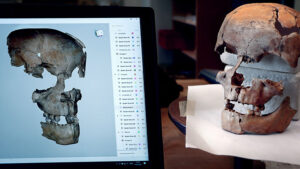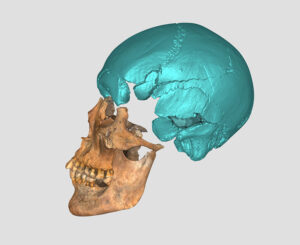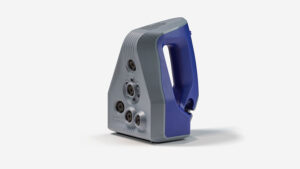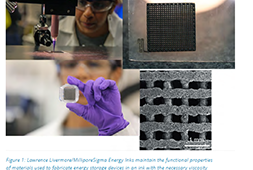By Andrei Vakulenko, CBDO, Artec 3D
Cultural heritage is an invaluable resource and a cultural legacy of a nation, community, and country. However, increasingly, many historical landmarks and artifacts are at risk of being lost from natural disasters, human activity, and conflict. Those trying to protect and preserve sites and artifacts often work in dangerous or challenging conditions requiring careful excavation and traditional methods for documentation and preservation can damage precious historical objects and place delicate materials at risk of degradation.
 To prevent the present from erasing the past, 3D scanning technology is being used by archaeologists across the globe to digitally preserve important historical and cultural relics.
To prevent the present from erasing the past, 3D scanning technology is being used by archaeologists across the globe to digitally preserve important historical and cultural relics.
3D scanning enables the high-fidelity, touch-free digital preservation of such relics. It allows scientists to create timeless digital twins of priceless artifacts – which can then be documented, distributed, and examined by teams of architects, historians, and scientists worldwide, and shared with audiences around the globe.
Ensuring data is collected with maximum accuracy and minimum contact requires innovative, touch-free 3D scanners that are easy to use, require little upfront training, and do the job quickly. Today’s specialized software also ensures that high-resolution scans can be seamlessly shared between scientific communities and teams for in-depth analysis and further hypothesizing.
Unearthing the lives and culture of ancient Nepal
3D scanning captures an object from every angle to produce a highly accurate digital model which can be studied and distributed, post-production. This 3D model can serve as a permanent record of artifacts that may be in danger of degradation or natural disaster. They are far more accurate than previous 2D libraries of images and drawings and can reveal fascinating clues about ancient cultures that may have been originally missed due to low resolution, lack of detail, or inaccurate recording.
 In 1990, the German Archaeological Institute (GAI) uncovered a trove of remarkably well-preserved animal and human remains dating back 2,000 years in one of Nepal’s most remote regions, the Mustang district. Found nestled high up in the Himalayas, the bones added another piece to the puzzle of the sparse historical knowledge of the area. They held valuable insights into the lives of a people and culture of which little is known and could provide vital clues into the migration and cultural history of Northern Nepal.
In 1990, the German Archaeological Institute (GAI) uncovered a trove of remarkably well-preserved animal and human remains dating back 2,000 years in one of Nepal’s most remote regions, the Mustang district. Found nestled high up in the Himalayas, the bones added another piece to the puzzle of the sparse historical knowledge of the area. They held valuable insights into the lives of a people and culture of which little is known and could provide vital clues into the migration and cultural history of Northern Nepal.
Discovered beneath the ruins of a castle some 3,000 meters above sea level, it would take archaeologists nearly a decade to excavate the site in three painstaking phases. The technology available at the time was unable to deliver the digitization capabilities of the present day, and so the case has recently been revisited, with 3D scanning at the heart of efforts to better analyze the components of this remarkable discovery.
Typically, archaeologists and anthropologists would use photogrammetry, x-rays, or CT scans to document relics. But given the fragility of the bones and the importance of their discovery, these traditional methods were considered far too time-consuming and potentially damaging. For instance, even other 3D scanners require placing sticky ‘targets’ onto the bones themselves to act as reference points, which might cause irreparable damage to the delicate surfaces. Even if physical contact was not an issue, the extensive preparation, careful, time-consuming staging, and dozens of photographs the process requires would still not produce an accurate-enough model for researchers to reference confidently.
Instead, th e decision was made to fully digitize the bones by creating highly accurate, multidimensional models for posterity and further research. For the purposes of the GAI team, 3D scanning was the obvious solution.
e decision was made to fully digitize the bones by creating highly accurate, multidimensional models for posterity and further research. For the purposes of the GAI team, 3D scanning was the obvious solution.
This approach saved the GAI team hours of time, with simpler bone shapes scanned in a matter of minutes and more complex structures taking only slightly longer. Additionally, the extreme fidelity and high resolution of the scans revealed fascinating, subtle details – like minute traces of infection around the molar teeth in one skull which would not have been possible without the accuracy achieved with 3D technology.
The processing time for each of the scans took only 20 minutes using the scanners’ accompanying software. Then they were ready to be distributed to parties across the world, enabling further research without the usual risk of damaging specimens in transport. A three-decade-old historical ‘cold case’ was successfully reopened and solved, enabling a better understanding of how the people of the remote Mustang district of Nepal once lived.
Digitizing the Shang Dynasty
One of the most crucial features of 3D scanning, particularly when applied to preservation, is the technology’s ability to capture objects in incredible detail, with virtually zero contact. Only the slightest amount of handling is required to place the object on a surface for scanning and is far less risky than any other methods to date.
One example of the importance of this contactless feature comes from the far east.
 Oracle bone inscriptions are the earliest known systematic characters in China and East Asia, with a history dating back more than 3,000 years. Historians understand these inscriptions to hold key insights about the development of various disciplines including linguistics, history, astronomy, agriculture, and medicine from centuries past.
Oracle bone inscriptions are the earliest known systematic characters in China and East Asia, with a history dating back more than 3,000 years. Historians understand these inscriptions to hold key insights about the development of various disciplines including linguistics, history, astronomy, agriculture, and medicine from centuries past.
However, since these bones’ discovery, researchers and enthusiasts have faced a critical challenge: how to transcribe, disseminate and share the textual information contained by the objects without causing damage to the bones themselves.
The traditional method, ‘rubbing’, is an ancient technique used in China that involves taking impressions of the inscriptions using water, paper, and ink. However, the rubbing process has many serious limitations. The abrasive physical contact with the bones causes damage, and the work is painstaking. Even then, the results of the final rubbing are easily influenced by temperature and humidity and vary in accuracy based on the operator’s skill level.
3D scanning provided a clear and much-needed solution to researchers flummoxed by these challenges.
A small handheld scanner was able to capture an extensive amount of surface detail on each oracle bone, producing high-resolution, color-accurate 3D models. While the scanner is moved around the bone, the captured 3D surface data can be displayed in real-time on a computer screen, then saved using software that clarifies and renders the input data. The result is a lifelike model that is highly precise and able to be forever preserved in digital form – while the original specimen remains undamaged. Thanks to this touchless technique, scientists and researchers can learn from oracle bones with more accuracy and speed than ever before.
Endless opportunities
3D scanning has expanded a world of possibilities for the scientific community. By enabling the fast and accurate creation of digital twins of historically significant objects, we are empowered to learn more about our ancestors and the ancient worlds they inhabited.
 As the demand for the digitization of cultural relics grows and technologies advance, 3D scanning has proven itself an invaluable tool in the world of archaeology and historical preservation. Its reliability, accuracy, efficiency, and digital shareability make 3D scanning the perfect partner for scientists and researchers wishing to examine, archive, and educate the wider world about the valuable heritage precious artifacts possess.
As the demand for the digitization of cultural relics grows and technologies advance, 3D scanning has proven itself an invaluable tool in the world of archaeology and historical preservation. Its reliability, accuracy, efficiency, and digital shareability make 3D scanning the perfect partner for scientists and researchers wishing to examine, archive, and educate the wider world about the valuable heritage precious artifacts possess.
Having access to a workable 3D model makes it easier for the scientific community to develop research and share it with peers. When studying an object, the ability to manipulate the model can lead to breakthroughs and new conclusions which are not as feasible when the physical specimen is too delicate to handle. The ability to rotate a digital model 360°, examine it from all angles, and zoom in to study intricate details vastly expands the tools in a scientist’s arsenal. Even the ability to remove features can be useful – for example, taking away color and viewing an object in crisp black and white can reveal markings that would not otherwise be noticeable.
The fields of archaeology, scientific research, digital archival, and museum curation will forever be changed by 3D technology and its ability to bring cultural heritage within the reach of more students, researchers, and enthusiasts than ever before.
 This accessibility is possibly the most important aspect. If significant historical findings are never shared beyond the bounds of the historical community, so much potential is lost. 3D models make it possible to highlight precious relics online, in video form, or even in a virtual reality or augmented reality environment, bringing it to new audiences and broadening the scope of classrooms and lecture halls all over the world.
This accessibility is possibly the most important aspect. If significant historical findings are never shared beyond the bounds of the historical community, so much potential is lost. 3D models make it possible to highlight precious relics online, in video form, or even in a virtual reality or augmented reality environment, bringing it to new audiences and broadening the scope of classrooms and lecture halls all over the world.
Additionally, rather than shipping delicate artifacts across the globe to different museums, the objects’ digital twins can serve the same purpose. This means local heritage can remain local while simultaneously creating new opportunities for it to be studied and viewed by geographically diverse audiences virtually.
In this digital era, 3D scanning is helping to satisfy the growing demand for the digitization of cultural relics and artifacts previously only viewable on-site at museums dotted around the world. Lost heritage has significant consequences for communities from the loss of identity to national instability. Therefore, new innovative approaches to preserving landmarks and history are essential. 3D technology is a reliable and accessible tool for archiving and restoring valuable historical landmarks and cultural heritage and for educating the masses about previously undiscovered past realities for years to come.





Tell Us What You Think!